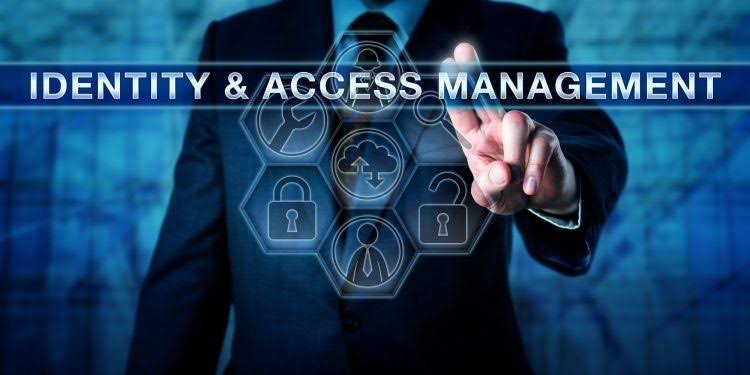Security of sensitive information and resources is primary in today’s connected digital world. Think of it as protecting a fortress filled with valuable treasures.
Before anyone can enter, they must prove their identity and demonstrate authorization. This is where Identity and Access Management (IAM) comes into play.
It is a critical framework that ensures only authorized individuals have access to the appropriate resources at the right time.
One Identity reports that 80% of respondents believe better identity and access management could have prevented cyber attacks on their company.
Getting exposure to IAM is essential whether you’re new to cybersecurity or an experienced professional.
It acts as a barrier against data breaches, ensures compliance with regulations, and protects your organization’s digital assets from potential threats.
In this article, you will gain valuable insights into “What is IAM?” and why it is crucial for maintaining regulatory compliance standards.
What is IAM? An Introduction to Identity and Access Management
Identity and Access Management (IAM) is a crucial guidebook of policies that ensures authorized access to resources and secures sensitive data, systems, and applications. IAM also enhances organizational efficiency.
IAM Basics:
- User identity management verifies individuals’ identities through passwords or biometrics.
- Access management assigns acceptable actions to users, like keys to different rooms.
- IAM tailors access permissions to roles, enabling effective responsibilities while maintaining security. It ensures everyone gets the right access, like assigning keys to specific areas.
IAM is key to maintaining security while enabling efficient operations within organizations.
The Foundation of Secure Access: How IAM Protects Your Digital Assets
IAM serves as the gatekeeper of your digital zone. Ensuring that only authorized individuals can gain access to sensitive information and perform specific actions within your system. Think of IAM as the bouncer at the entrance to an exclusive club but for your data.
IAM performs several critical functions to maintain security.
Firstly, it handles authentication. This involves verifying the identity of users attempting to access the system. Authentication methods may include passwords, biometrics, or multi-factor authentication, similar to providing a password to gain entry.
Secondly, IAM manages authorization. Once a user’s identity is confirmed, IAM determines what actions they are permitted to take within the system. This is similar to providing different levels of access passes at an amusement park. Ensuring that users only have access to the areas and functions they are authorized to use.
Lastly, IAM maintains accountability by tracking user activities within the system. This serves as a digital record of who did what and when, like having a detective monitor and document actions. It enables organizations to detect and respond swiftly to any suspicious activities.
By implementing solid IAM practices, organizations can boost their security posture and protect their digital assets from internal and external threats.
Thus, IAM plays an essential role in ensuring the integrity and security of organizational data.
Creating and Managing User Accounts: The Core of IAM
User accounts are the foundation of Identity and Access Management (IAM). These accounts represent individuals within your organization who need access to various systems, applications, and data.
Creating User Accounts:When it comes to creating user accounts. It’s crucial to ensure each one is unique to the individual it represents. This typically involves assigning a username, password, and necessary permissions or roles.
Managing User Accounts: User Account Management is a continuous responsibility. Regular audits are required to keep accounts current and relevant to each user’s role or status. Unused accounts can help to reduce security threats in your organization.
Organizations can control resource access and keep things safe by including user account creation and management in IAM protocols.
The Key Benefits of Implementing IAM in Your OrganizationEnhanced Security Measures
Adding Identity and Access Management (IAM) to your organization is crucial for making security stronger. IAM is a solid defense mechanism.
It permits only authorized personnel to access sensitive data and resources. This is how it ruins potential violations and illegal activities.
Through demanding access control, IAM establishes a multi-layered security framework that effectively reduces risks suggested by both internal and external threats.
Efficient Access Administration
IAM facilitates streamlined access management by centralizing user authentication and authorization procedures. Deploying multi-factor authentication (MFA) strengthens security by adding extra layers of verification. Ensuring users provide more than one form of authentication before accessing sensitive data.
With IAM, users can securely navigate various applications using a unified set of credentials. It upholds security while enhancing the effectiveness of IT personnel in managing user privileges.
Compliance Assurance
IAM helps organizations follow the rules by carefully tracking what users are doing. These records show that the organization follows necessary standards like GDPR or HIPAA.
When organizations use IAM, they can ensure they’re protecting data like they’re supposed to. Avoiding legal trouble for not following the rules about data protection.
Essential IAM Features for Ensuring Secure Access
Multi-factor Authentication (MFA):
Imagine this scenario:
When users log in, they enter their password and receive a unique code on their phone for extra verification.
This implementation of MFA introduces an added layer of security, strengthening the overall defense mechanism.
Role-based Access Control (RBAC):
Like organizations have hierarchies, RBAC lets entities assign access based on specific roles. This ensures that individuals only access resources relevant to their roles, making the system more secure.
Audit Logs:
Audit logs are crucial, too. They carefully record user activities and interactions in the system. It helps to detect and prevent unauthorized access attempts.
Identity and Access Management (IAM) solutions offer additional features.
- Single Sign-On (SSO) allows users to access multiple systems with one login, simplifying authentication processes.
- Automated user account management reduces administrative tasks,
- Privileged Access Management (PAM) provides detailed control over high-level privileges to minimize misuse risks.
Organizations can effectively use these features to enhance their cybersecurity defenses against uncool threats.
Adopting these advancements is important for organizations to strengthen their digital security and protect sensitive assets from unauthorized access.
Common IAM Challenges and How to Overcome Them
Lack of Visibility: In Identity and Access Management (IAM), figuring out who can access organizational systems and data is like trying to see through thick fog with limited visibility.
Organizations can solve this by doing regular audits of user access, automating provisioning, and using advanced IAM tools with detailed reporting.
Difficulty Managing Multiple Identities:Managing identities across different devices and apps is like running a busy circus.
However, solutions are available to streamline this process. Single sign-on solutions simplify access, while centralized identity management systems offer control amid the chaos.
Balancing Security and User Convenience: Simply ensure your digital place is secure but easy for the right people to get into. This is called a balance between security and user convenience.
Teaching people about strong passwords, taking extra steps like confirming your identity differently, and assessing how risky a situation is can help.
Future Trends in IAM: What to Expect in Secure Access Management
Biometric Authentication Adoption: A prominent trend on the rise involves the increased utilization of biometric authentication techniques. Such as fingerprint scanning & facial recognition.
These cutting-edge technologies maintain and sustain security. It offers a solid means to authenticate identities and enhance access management procedures.
Incorporation of Artificial Intelligence (AI): Another significant development is merging Artificial Intelligence (AI) with IAM systems. AI can change IAM by using its analysis to find strange user actions and predict security problems before they happen. This proactive strategy strengthens access management strategies and safeguards digital resources.
User Experience Enhancement: Sharpening focus is placed on enhancing user experience within IAM environments.
This includes refining user interfaces and streamlining authentication processes to craft a smooth and intuitive user journey.
IAM systems strive to uplift user satisfaction and boost productivity by sticking to user-centric design principles.
Getting Started with IAM: Steps for Beginners
Understand the Basics: Begin by learning the basics of Identity and Access Management (IAM).
Understand important ideas like how users prove who they are, what they’re allowed to do, and how it’s all controlled.
This is super important for keeping your organization’s stuff safe.
Evaluate Your Needs: Next, think about what your organization needs to manage who can do what.
Consider things like how big your organization is, how safe you need things to be, following the rules, and what different people should be able to do.
This helps you find the right IAM solution that fits your business plans.
Choose a Solution: Check out different IAM solutions once you know your needs. Some work inside your organization’s systems, while others are based online.
Choose a solution that fits your infrastructure architecture and offers solid security features for effective identity management.
As a beginner, you can build a solid understanding of how IAM operates in an organizational context.
This will better equip you to make informed identity governance and access control decisions while bolstering your cybersecurity defenses.



